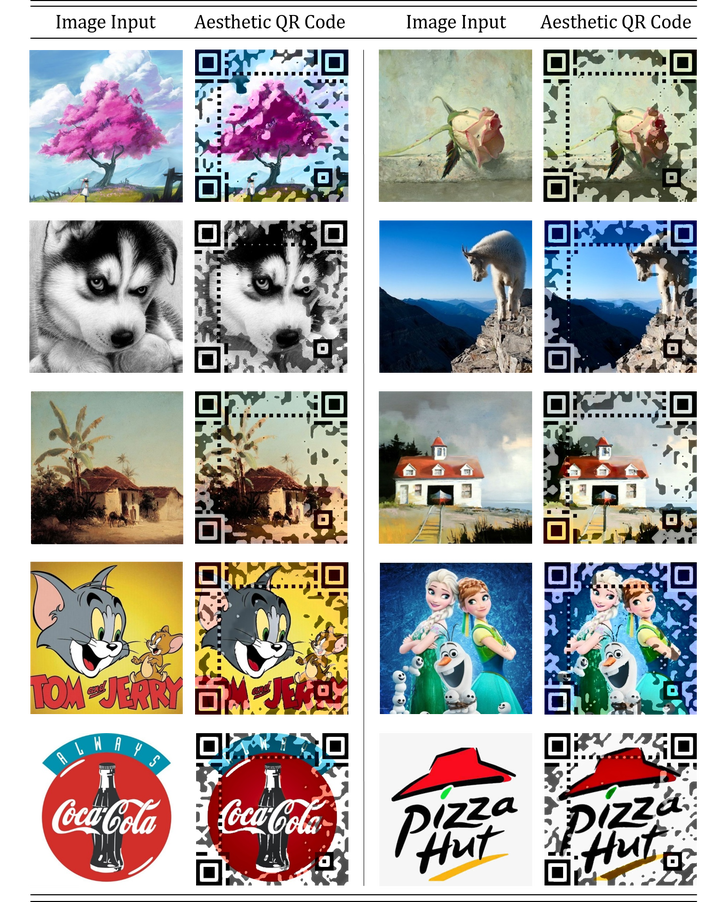 Examples
Examples
Abstract
The quick response code, abbreviated as QR Code, is often presented as a two-dimensional matrix consisting of black and white modules that carry digital information. Visually, the vanilla QR Code is not friendly to human being since it is originally designed to be read by machines. Many efforts have been made in recent years to improve the visual appearance of the QR Code while maintaining its machine readability. Among all the proposals, the blending based methods aiming at achieving a balance between an aesthetic outlook and reading robustness have attracted most attentions. However, a common problem of existing blending based methods is that most dispersed data points are not successfully blended into the background, leading to unpleasant visual disturbances. Therefore, we propose a QR Code beautification algorithm that uses an intermedia images to help blending the QR Code and background image more naturally by reducing the scattered points while preserving the reading robustness at the same time. The intermedia image is produced using a modified neural style transfer network, which adopts a basic aesthetic QR Code as the content input and the background image as the style reference. We also introduce a self-defined mask allowing the user to select the region of interest in the background image of which the appearance will be preserved to the largest extent. Experimental results show that our method is able to stably produce QR Codes that are both machine readable and visual-friendly to human.